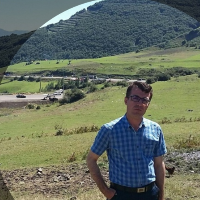Assessing the effects of various land use change scenarios on runoff using SWAT model in the Ahl Iman watershed
Watersheds are physical boundaries that include natural ecosystems and all human interactions. Land-use change in watersheds has been one of the major challenges in the 21st century. According to the findings of some researchers, the effects of land use on water resources are more severe than climate change. The estimation of streamflow in watersheds with different land uses is one of the important issues in hydrological studies. In recent years, one of the most widely used methods to facilitate computation has been the use of computer models that represent the watershed response with high accuracy. Restrictions on access to sufficient hydrological data make the role of watershed simulation models more important. This study aimed at modeling monthly runoff using the SWAT model and assessing the effects of different land-use change scenarios on runoff components.
The Ahl-e-Iman watershed with 7770.86 ha area is located in Ardabil province, which was selected to predict the effects of land-use change on hydrologic response. The SWAT model has been developed to simulate different parameters of the daily, monthly, and annual hydrologic responses. The curve number method in the SWAT model was used to estimate monthly surface runoff and output runoff yield. The main inputs of the SWAT model, including daily precipitation, minimum and maximum temperature, relative humidity, and wind speed, were obtained from available data centers to prepare a digital elevation map (DEM), land use map, and soil map. The SWAT CUP program was used to calibrate the model. The input of this program is observational flow data and the output file is the SWAT model. The statistical indices of Nash-Sutcliffe coefficient (NS), correlation coefficient (R2), and mean square error (MSE) were used to evaluate the simulation results of the model.
Sensitivity analysis and the model calibration were performed in 2003-2010. The validation of the SWAT model showed that this model had a high performance for predicting the hydrologic effects of management scenarios in the Ahl Iman watershed. The results showed that the model had high performance in both periods. The obtained land-use map was given to the model to simulate the effect of land use change. The results of runoff simulation with both land uses of the study scenarios compared with the base flow are given in Figure 1. Figure (1): Comparing base flow with streamflow in the first and second land-use change scenarios.
The performance of the SWAT model was evaluated in both the calibration and validation periods; therefore, this model was used to investigate different land use management scenarios. The results of the first management scenario showed that the average streamflow discharge was equal to 0.3 cms, which showed 17% decrease in discharge compared to the base land use discharge (0.6 m3). The streamflow discharge increased 36% compared to the base flow in the second scenario. Therefore, this scenario will reduce the water resources of the region in a long time.
-
Estimation of river bank erosion and effective factors in Polealmas-Gilande reach, Balkhlochai River in Ardabil
*, Arezoo Eshaghzadeh, Shokrollah Asghari,
Hydrogeomorphology, Autumn 2024 -
Spatial assessment and zoning of landslide risk in Zamkan watershed using support vector machine and logistic regression
Fariba Esfandyari Darabad, Ghobad Rostami, *, Mousa Abedini
Hydrogeomorphology, Autumn 2024 -
Spatial Pattern of the Multifunctional Disturbance Indicators in the Samian Watershed, Ardabil Province
Vahideh Moradzadeh, Zeinab Hazbavi*, Abazar Esmali-Ouri, , Shirin Zarei
Iranian Journal of Watershed Management Science and Engineering, -
Land degradation intensity mapping using environmental factors and Sentinel-2 derived spectral indices in an arid region in south of Iran
Mohamamd Ebrahim Afifi, *
Anthropogenic Pollution Journal, Winter and Spring 2024




